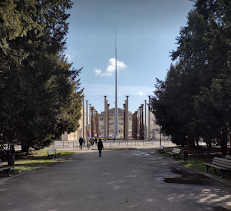Wroclaw, February 2024
The tram network is extensive but confusing, and I couldn't find an up to date map ahead of travel, nor is there one at the tram-stops. There is however an A3 size timetable for each tram at the stop, which lists the stations served. When I saw a tram coming, I quickly looked at the relevant timetable, cross-referenced with another (somewhat out of date) network map I had printed and made a decision whether to board or not.
The ticket machines at each tram stop are good. They do English, they give change and they sell the whole range of tickets, including the 1, 2 or 3 day ticket (better than Gdansk, where it was tricky to find a place selling the 2 or 3 day ticket). If you prefer to buy a few single tickets, and use "as and when" across your trip, buy at any machine early in your trip and simply stamp one each time you board a bus or tram.
You can also wave a debit card at a machine on board; if at first you fail, try a different machine elsewhere on the bus - I saw this happen numerous times while I was there. However trams and buses can be busy, so easier to get tickets off-board in my opinion.
You can also wave a debit card at a machine on board; if at first you fail, try a different machine elsewhere on the bus - I saw this happen numerous times while I was there. However trams and buses can be busy, so easier to get tickets off-board in my opinion.
Eating and Drinking
There is a great vegetarian restaurant, Vega, at Rynek - the main Market Square, which I used several times. Ukrainian Borscht soup was great at 13 zloty.
There is a nice Polish boozer, Przedwojenna, beside St Elizabeth of Hungary church. A medium sized draught beer was 7 zloty.
The Trip
Saturday Morning - I took the tram to WUWA, a group of buildings built for the German Werkbund exhibition of 1929, intended to demonstrate simple and quick building design. I had a coffee at the WUWA cafe, where I was able to pick up a free small map of the layout - useful for a quick walk to include all the buildings. There is also a model / sculpture of the whole site near the wooden communal building. It took about 45 minutes to see all the buildings.
A WUWA building
I then took a couple of trams to arrive at Hala Targowa, the old Market Hall, in the northern city centre. Completed in 1908, the brick exterior belies a modernist interior built around a a frame of concrete arches. The stalls included a Polish Milk-bar type cafeteria in one corner. The best overall view was from the balcony.

The 1908 market

View from the balcony
Saturday Afternoon - I first went to the impressive, castle-like main railway station - Wroclaw Glowny, opened in 1857. The mezzanine around the main hall had a number of small, free contemporary art-galleries.

It turned out that a number of museums were free on Saturdays; I chose the National Museum in Wroclaw, a beautiful building with a central atrium and galleries around it. The art collection was surprisingly large and covered all periods from pre-Renaissance to the 20th Century. There was a heavy bias towards Germanic painters I had not heard of, but artists like Lucas Cranach the Elder, Pieter Brueghel the Younger, Lippi, Bronzino and Kandinsky were also there.
I breezed around some rooms and corridors of colourful religious wooden sculptures from pre-Renaissance times, but there wasn't time to take much more in; the Museum closed at 5pm.
Saturday Evening - I went to a ballet at the Opera House.
Sunday Morning - I took the tram to Centennial Hall and walked right around the building via the pergola at the back. The Hall was opened in 1913 to celebrate the 100th anniversary of a Napoleonic era battle, and is an early landmark of reinforced concrete. I gave the Hall visit and exhibition a miss, but part of the neighbouring Four Domes Pavilion is open with no charge, as was a small exhibition about the Polish film industry in an adjacent building.

Centennial Hall, , with its monumental pillars.
The "spike" sculpture was erected later, in 1948
Sunday Afternoon - I finally made it to the touristy Rynek - Market Square, which is indeed impressive in its scale and colour. I climbed the 300 steps up the tower of St Elizabeth of Hungary (which has the highest viewpoint of any of the central churches).
I then took a tram south of the city-centre, past the modern Sky Tower, to look at a very eccentric water tower opened in 1904 and modelled on a castle. This pretty amazing building is now marooned between lanes of a dual carriageway in a rather dull part of town. It is currently not open to visitors.


Water Tower
Sunday Evening - I was running out of steam, but I noticed there was another impressive water-tower near my hotel. It looked monumental lit up at night.

Water Tower on the River
Dike

1907 Art Nouveau (now a
A Note on the Architecture
Like many Germanic cities, the city is strong on Art Nouveau (around the turn of the century) and brick-expessionist / Art Deco buildings (mostly from the 1920s). For the former, Rynek and the streets around it are good. For the latter, Renoma shopping-centre is a standout, but the Old Post Office (now attached to the modern OVO building), the Regional Police HQ (still in use) and the Chameleon retail building are other great examples. Apparently there are good views from the car-park at the top of the Renoma building.
1907 Art Nouveau (now a



Comments
Post a Comment